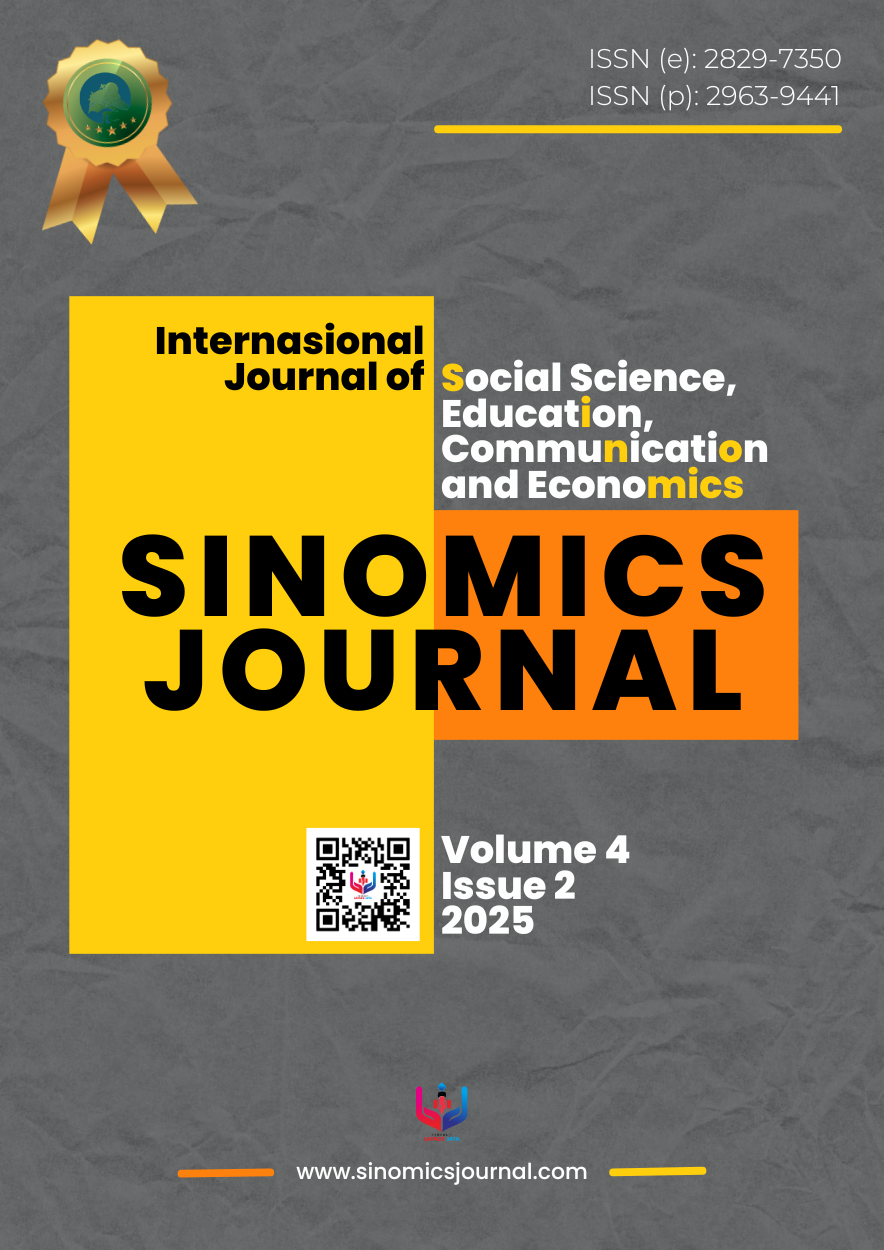The Application of Reality Therapy with the WDEP Technique to Improve the Self-Esteem of People Living with HIV/AIDS at Panti Bina Insan Bangun 2 Jakarta
DOI:
https://doi.org/10.54443/sj.v4i2.493Keywords:
Reality Therapy, WDEP Technique, Self-Esteem, HIV/AIDS, PLWHA, Psychological Intervention, Group Counseling, Rehabilitation, Institutional Care, Coopersmith Self-Esteem InventoryAbstract
This study explores the application of Reality Therapy using the WDEP (Wants, Doing, Evaluation, Planning) technique to improve self-esteem among People Living With HIV/AIDS (PLWHA) at the Panti Sosial Bina Insan Bangun Daya II in East Jakarta. As PLWHA often face stigma, rejection, and psychological distress, self-esteem becomes a crucial component for mental resilience and social reintegration. This quasi-experimental research employed a pre-test and post-test control group design, involving five selected participants diagnosed with HIV/AIDS aged 18 and above. The intervention consisted of ten group counseling sessions focusing on helping participants identify their goals, assess current behaviors, and plan realistic strategies for change. Self-esteem levels were measured using the Coopersmith Self-Esteem Inventory (CSEI). Pre-test results indicated low levels of self-esteem, with an average score of 31. Following the intervention, the post-test average rose to 48, signifying a 54% improvement and placing participants in the high self-esteem category. Qualitative observations during therapy sessions revealed significant behavioral transformations, including increased emotional regulation, social interaction, self-acceptance, responsibility, and future orientation. The findings demonstrate that Reality Therapy with WDEP is an effective, culturally adaptable approach to psychological rehabilitation in institutional settings. It not only enhances self-esteem but also empowers PLWHA to rebuild their sense of self-worth, establish supportive relationships, and envision a hopeful future. The study contributes to expanding evidence-based psychosocial interventions for marginalized populations in Indonesia.
Downloads
References
Ahmed, M. A. (2016). Self-Esteem: Perspectives, Influences, and Improvement Strategies. Department of Psychology, University of Alexandria.
Anobi Asare, I. ., & Dotse Komla Plahar, J. . (2025). Cultural, Socioeconomic, And Familial Determinants Of Child Psychological Development In Ghana: A Holistic Perspective. Jurnal Ilmu Psikologi Dan Kesehatan (Sikontan), 3(4), 209–220. https://doi.org/10.47353/sikontan.v3i4.2789
Antle, B. J., Wells, L. M., Goldie, R. S., DeMatteo, D., & King, S. M. (2001). Challenges of parenting for families living with HIV/AIDS. Social Work, 46(2), 159–169.
Aulia, D. A., & Sovitriana, R. (2021). Terapi realitas untuk meningkatkan self-esteem pada wanita di panti sosial. Fakultas Psikologi, Universitas Persada Indonesia Y.A.I, 117–126.
Brown, L., Macintyre, K., & Trujillo, L. (2003). Interventions to reduce HIV/AIDS stigma: What have we learned? AIDS Education and Prevention, 15(1), 49–69.
Cahyati Teguh Pancani, P. ., & Ningsih, N. . (2025). A Comprehensive Study On Mbg (Makan Bergizi Gratis) In The Prabowo-Gibran Cabinet: Evaluating The Psychological And Health Impacts Of The Policy On Underserved Communities. Jurnal Ilmu Psikologi Dan Kesehatan (SIKONTAN), 3(4), 177–186. https://doi.org/10.47353/sikontan.v3i4.2783
Castro, R. J., Lopes, J. R., & Monteiro, M. D. (2020). The psychological effects of HIV-related stigma. Psychology and Health Journal, 35(6), 742–755.
Coopersmith, S. (1967). The Antecedents of Self-Esteem. San Francisco: Freeman.
Feist, J., & Feist, G. J. (2009). Theories of Personality (7th ed.). Boston: McGraw-Hill.
Fang, X. (2014). Stigma and psychological distress among HIV-positive individuals: The mediating role of coping. Journal of AIDS and HIV Research, 6(1), 1–7.
Gibson, R. L., & Mitchell, M. H. (2011). Introduction to Counseling and Guidance (7th ed.). Boston: Pearson Education.
Glasser, W. (1998). Choice Theory: A New Psychology of Personal Freedom. New York: HarperCollins.
Glasser, W. (2001). Reality Therapy in Action. New York: HarperPerennial.
Guindon, M. H. (2002). Toward accountability in the use of the self-esteem construct. Journal of Counseling & Development, 80(2), 204–214.
Handayani, S. (2018). Hubungan peranan lingkungan terhadap kejadian HIV/AIDS. Jurnal Manajemen Kesehatan Yayasan RS. Dr. Soetomo, 4(2), 134–143.
Hasdianah, & Dewi, P. (2014). Virologi: Mengenal Virus Penyakit dan Pencegahannya. Yogyakarta: Nuhu Medik.
Kalichman, S. C., & Simbayi, L. C. (2004). Traditional beliefs about the cause of AIDS and AIDS-related stigma in South Africa. AIDS Care, 16(5), 572–580.
Maharani, D. M. (2019). Hubungan antara self-esteem dengan academic burnout. Jurnal Psikologi UIN Syarif Hidayatullah, 10(2), 145–154.
Nelson, J. R., & Jones, R. A. (2000). Working with Disaffected Students: A Therapy-based Approach to Managing Student Behavior. London: Paul Chapman Publishing.
Pratiwi, L. R. (2018). Reality therapy as a means of increasing resilience to individuals with physical disabilities. Intuisi: Jurnal Psikologi Ilmiah, 10(1), 10–17.
Rahmawan, F. R., Putri, R. E., & Sovitriana, R. (2023). Penerapan terapi realitas teknik WDEP untuk meningkatkan penerimaan diri WBS panti bina insan bangun daya. IKRA-ITH Humaniora: Jurnal Sosial dan Humaniora, 7(3), 182–189.
Rosenberg, M. (1979). Conceiving the Self. New York: Basic Books.
Santrock, J. W. (2012). Life-span Development (14th ed.). New York: McGraw-Hill.
Sarandria, A. (2012). Efektivitas cognitive behavioral therapy untuk meningkatkan self-esteem pada dewasa muda. Thesis Magister Psikologi Klinis, Universitas Indonesia.
Sovitriana, R. (2021). Ragam Intervensi Terapi Psikologi dan Contoh Kasus. Jakarta: Fakultas Psikologi Universitas Persada Indonesia Y.A.I.
Sugiyono. (2013). Metode Penelitian Kuantitatif, Kualitatif dan R&D. Bandung: Alfabeta.
Taylor, S. E., & Brown, J. D. (1988). Illusion and well-being: A social psychological perspective on mental health. Psychological Bulletin, 103(2), 193–210.
UNAIDS. (2022). Global HIV & AIDS Statistics—Fact Sheet. Retrieved from https://www.unaids.org
Wubbolding, R. E. (1995). Counseling with Reality Therapy. Alexandria: American Counseling Association.
Wubbolding, R. E. (2000). Reality Therapy for the 21st Century. Philadelphia: Brunner-Routledge.
Yalom, I. D. (2005). The Theory and Practice of Group Psychotherapy (5th ed.). New York: Basic Books.
World Health Organization. (2021). HIV/AIDS. Retrieved from https://www.who.int/hiv/
Downloads
Published
How to Cite
License
Copyright (c) 2025 Lun Farita Djakiman, Shinta Andini, Nur Cholidah, Rilla Sovitriana

This work is licensed under a Creative Commons Attribution 4.0 International License.






 Results From Scopus: 80 Citedness
Results From Scopus: 80 Citedness















